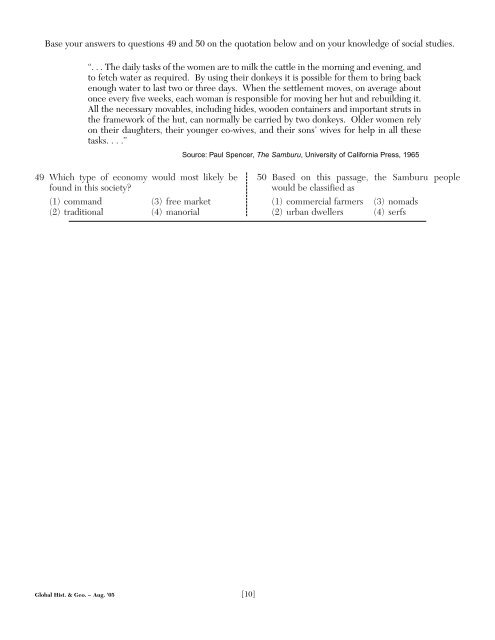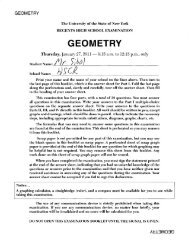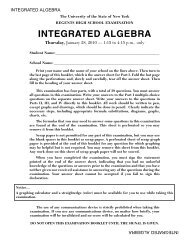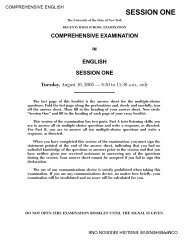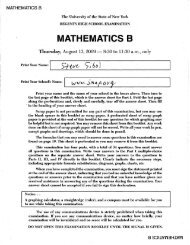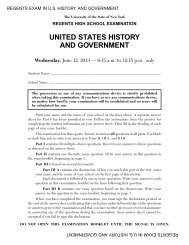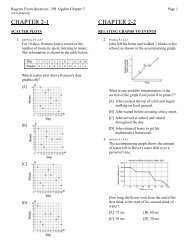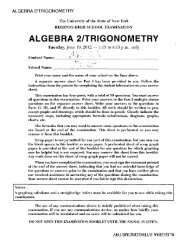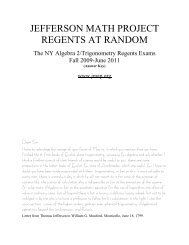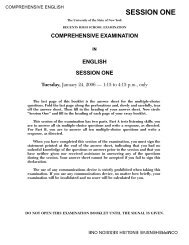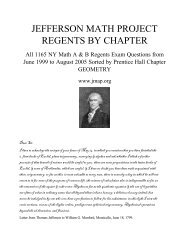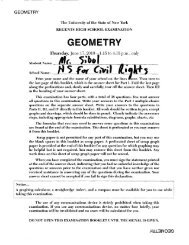global history and geography - JMap
global history and geography - JMap
global history and geography - JMap
You also want an ePaper? Increase the reach of your titles
YUMPU automatically turns print PDFs into web optimized ePapers that Google loves.
Base your answers to questions 49 <strong>and</strong> 50 on the quotation below <strong>and</strong> on your knowledge of social studies.<br />
“. . . The daily tasks of the women are to milk the cattle in the morning <strong>and</strong> evening, <strong>and</strong><br />
to fetch water as required. By using their donkeys it is possible for them to bring back<br />
enough water to last two or three days. When the settlement moves, on average about<br />
once every five weeks, each woman is responsible for moving her hut <strong>and</strong> rebuilding it.<br />
All the necessary movables, including hides, wooden containers <strong>and</strong> important struts in<br />
the framework of the hut, can normally be carried by two donkeys. Older women rely<br />
on their daughters, their younger co-wives, <strong>and</strong> their sons’ wives for help in all these<br />
tasks. . . .”<br />
Source: Paul Spencer, The Samburu, University of California Press, 1965<br />
49 Which type of economy would most likely be<br />
found in this society?<br />
(1) comm<strong>and</strong> (3) free market<br />
(2) traditional (4) manorial<br />
50 Based on this passage, the Samburu people<br />
would be classified as<br />
(1) commercial farmers (3) nomads<br />
(2) urban dwellers (4) serfs<br />
Global Hist. & Geo. – Aug. ’05 [10]


